Personhood is properly defined by membership in the human species, not by stage of development within that species.
A living being’s designation to a species is determined not by the stage of development but by the sum total of its biological characteristics— actual and potential—which are genetically determined…. If we say that [the fetus] is not human, e.g. a member of Homo sapiens, we must say it is a member of another species. But this cannot be. [1]
Dictionaries define person as a “human being,” “human individual,” or “member of the human race.” What makes a dog a dog is that he came from dogs. His father was a dog and his mother was a dog, and therefore he is a dog. What makes a human a human is that he came from humans. His father was a human person and his mother was a human person, so he can be nothing other than a human person. [2]
The beginning of each human life is an event (NOT a process)
We must not be confused by statements such as Carl Sagan’s: [3]
Despite many claims to the contrary life does not begin at conception: It is an unbroken chain that stretches back nearly to the origin of the Earth, 4.6 billion years ago. Nor does human life begin at conception: It is an unbroken chain dating back to the origin of species, tens or hundreds of thousands of years ago.
Sorry, Carl! You’re missing the point.
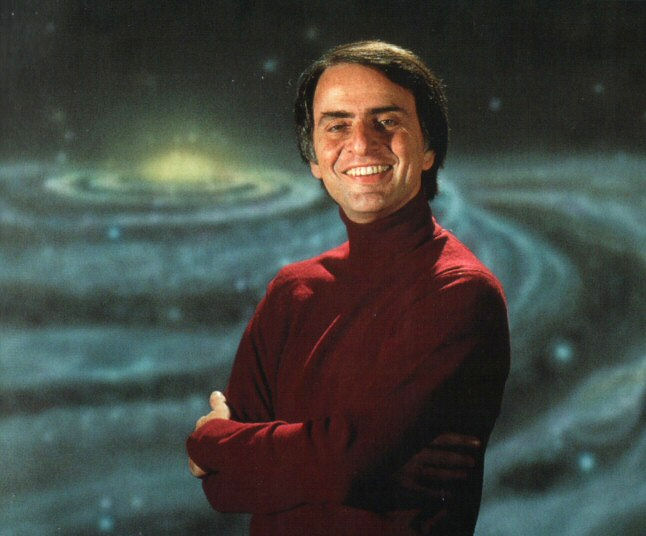 Sagan missed the point entirely. When it comes to this issue, no one is talking about when the earth began or when the first humans began, but when each individual human being’s life begins.
Sagan missed the point entirely. When it comes to this issue, no one is talking about when the earth began or when the first humans began, but when each individual human being’s life begins.
None of us existed 150 years ago, but we do exist now. So somewhere between 150 years ago and now, your life began. How long your heritage goes back is irrelevant. The point is, your actual life started at a moment in time. Carl Sagan notwithstanding, the beginning of each human life is not a process, but an event. That event is conception.
It is an established scientific fact that life begins at conception.
Personhood is not a matter of size, skill, or degree of intelligence.
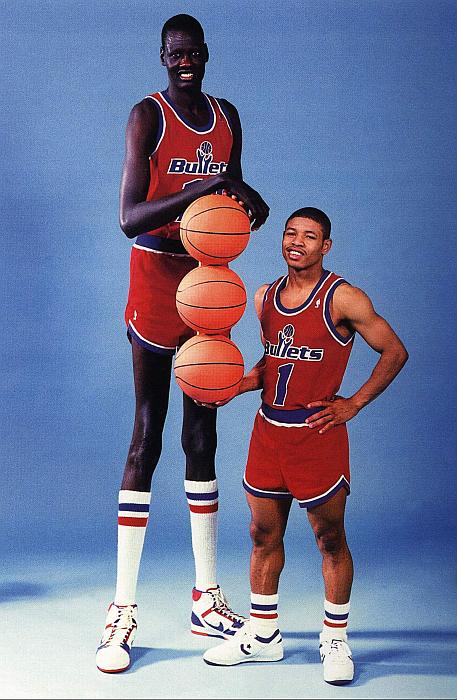 Pro-choice advocates often point out that a child aborted in the first trimester may be less than an inch or two in size, or less than an ounce or two in weight. But what measure of personhood is size?
Pro-choice advocates often point out that a child aborted in the first trimester may be less than an inch or two in size, or less than an ounce or two in weight. But what measure of personhood is size?
Is a professional basketball player more of a person than someone half his size?
If a two-hundred-pound man loses fifty pounds, does he lose one fourth of his personhood?
Is a 500 pound sumo wrestler more of a person than all of the smaller spectators watching in the stands?
Do you become “more of a person” as you grow older and bigger? If so, at what point? Who gets to decide at what “point” you truly “become a person”? Why should someone else ever have the right to say when you “become a person” or when you are “worth keeping alive”?
Scales and rulers are no measurement of human nature or worth. Intuitively, we all understand the truth put so simply by Dr. Seuss in Horton Hears a Who: [4]
Because, after all, a person is a person, no matter how small.
Age, size, IQ, or stage of development are simply differences in degree, not in kind.
Joseph Fletcher, then professor at the University of Virginia, argued that: [5]
An “individual” is not a “person” unless he has an IQ of at least 40, is self-aware, has self-control, with a sense of time (past, present, and future) and an ability to relate to others.
One problem with these criteria is that they do not apply to an entire class of people, namely the comatose. Does anyone seriously believe that people lose their humanity when they go into a coma and regain it when they come out? If so, wouldn’t the same be true when we sleep? Must one be awake, and therefore aware of self and time, to be a person? If one were asleep for five years rather than five hours, would this change the issue of his personhood?
British anthropologist Ashley Montague says that no one becomes human until he is molded by social and cultural influences. By this he means that more intelligent and educated people (such as himself) are more human than the inferior elements of society (such as some of the rest of us). [6]
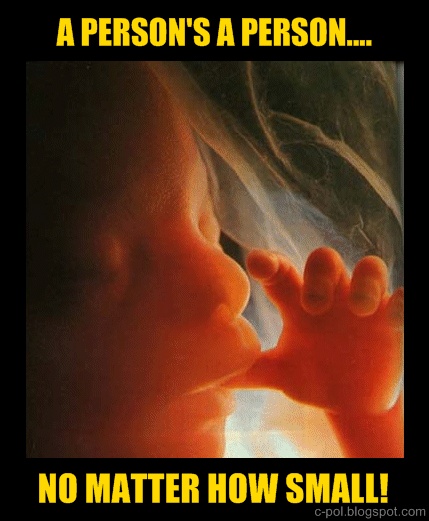 If personhood is determined by one’s current capacities, then someone who is unconscious or could be killed because he is not demonstrating superior intellect and skills. “But give the man time and he’ll be able to function as a person.” Give the baby time and so will she.
If personhood is determined by one’s current capacities, then someone who is unconscious or could be killed because he is not demonstrating superior intellect and skills. “But give the man time and he’ll be able to function as a person.” Give the baby time and so will she.
Age, size, IQ, or stage of development are simply differences in degree, not in kind. Our kind is humanity. We are people—human beings. We possess certain skills to differing degrees at different stages of development. When we reach maturation, there are many different degrees of skills and levels of IQ. But none of these make some people better or more human than others. None make some qualified to live and others unqualified.
There is no objective evidence to indicate that someone can be a member of the human race, but because he lacks certain qualities, he thereby fails to be a person.
The unborn’s status should be determined on an objective basis, not on subjective or self-serving definitions of personhood.
The Fourteenth Amendment says that the state shall not deprive any person of life without due process of law. When that was written, the word human was a synonym for person and could just as easily have been used. The Supreme Court admitted in Roe v. Wade: [7]
If the suggestion of personhood [of the unborn] is established, the appellant’s [proabortion] case, of course, collapses, for the fetus’s right to life is then guaranteed specifically by the [fourteenth] amendment.
To solve this problem, the court chose to abandon the historic meaning of personhood. In the years that have followed, a long series of subjective and artificial distinctions have been made by prochoice advocates to differentiate between humans and persons. Part of the reason for this is that the scientific fact that life begins at conception paints the pro-choice movement into a corner. The old and still popular argument that “this isn’t human life” is privately known to be erroneous by thinking pro-choice people.
They realize it’s only a matter of time before the public learns the truth. The newer strategy is to say “Okay, this is human life, but it isn’t really a person.”
We must not reduce issues of life and death and basic human rights to a semantic game in which we are free to redefine our terms. Changing the meaning of words doesn’t change reality. The concept of personhood is now virtually worthless as an ethical guide in the matter of abortion. The only objective questions we can ask are:
- “Is it human; that is, did it come from human beings?”
- “Is it a genetically unique individual?”
- “Is it alive and growing?”
If the answers are yes, then “it” is a “he” or “she,” a living person, possessing rights and deserving of protection.
It is a scientific fact that there are thought processes at work in unborn babies.
The Associated Press reported a study showing:
Babies start learning about their language-to-be before they are born.
University of North Carolina psychology professor Dr. Anthony DeCasper was quoted as saying: [8]
Fetuses heard, perceived, listened and learned something about the acoustic structure of American English.
Newsweek states: [9]
Life in the womb represents the next frontier for studies of human development, and the early explorations of the frontier—through ultrasound, fiber-optic cameras, miniature microphones—have yielded startling discoveries.
The same article says:
With no hype at all, the fetus can rightly be called a marvel of cognition, consciousness and sentience.
It also says that scientists have already detected sentience (self-awareness) in the second trimester. [10] Indeed, the extraordinary capacities and responses of preborn children have been well documented by scientific studies for years. [11]
By early in the second trimester the baby moves his hands to shield his eyes to bright light coming in through his mother’s body. [12]
The fetus also responds to sounds in frequencies so high or low that they cannot be heard by the human adult ear.
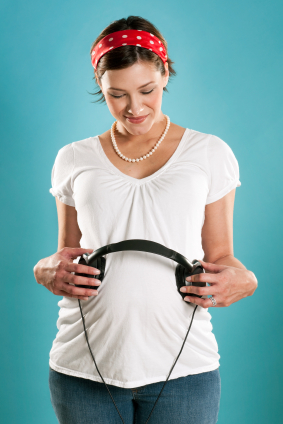 He hears loud music and may even cover his ears at loud noises from the outside world. At seventeen weeks, when abortions are still commonly performed, the child experiences rapid eye movement (REM) sleep, indicating that he is not only sleeping, but dreaming. [13] Can we say that someone capable of dreaming is incapable of thinking?
He hears loud music and may even cover his ears at loud noises from the outside world. At seventeen weeks, when abortions are still commonly performed, the child experiences rapid eye movement (REM) sleep, indicating that he is not only sleeping, but dreaming. [13] Can we say that someone capable of dreaming is incapable of thinking?
There is no doubt whatsoever that later abortions kill a sentient, thinking human being. By the end of the second and the start of the third trimester (at twenty-four weeks) the “brain’s neural circuits are as advanced as a new-born’s.” [14] It seems unthinkable that anyone aware of the facts could favor the current legality of abortions in the second and third trimesters. That such abortions are adamantly defended by pro-choice advocates should cause us to ask whether their position is based on facts at all, or merely on personal preference or wishful thinking.
But are earlier abortions any better than later ones? Since there is a functioning brain with measurable brain waves at forty days of development, who are we to say that these tiny brains can’t do what brains do—think? Yet the vast majority of abortions legal in America occur after forty days. And even in the case of early chemical abortions which take the life before there’s the capacity for thought, does this destroy the life in a way that is any less real or significant? Does it change the fact that a child who would have had a name and a family and a life will now have none of these?
If the unborn’s value can be compared to that of an animal, there is no reason not to also compare the value of born people to animals.
In 1975 Australian scientist and bioethicist Peter Singer wrote a book with a title that was to become the banner of a new movement: Animal Liberation. Singer said: [15]
It can no longer be maintained by anyone but a religious fanatic that man is the special darling of the universe, or that animals were created to provide us with food, or that we have divine authority over them, and divine permission to kill them.
Singer, now a professor at Princeton University, denounces what he calls “speciesism”—valuing humans above animals. He defines speciesism as: [16]
a prejudice or attitude of bias in favor of the interests of members of one’s own species and against those of members of other species.
In his textbook, Practical Ethics, Singer says that speciesism is just as bad as sexism or racism: [17]
It is speciesist to judge that the life of a normal adult member of our species is more valuable than the life of a normal adult mouse.
Singer stretches the conventional definition of person beyond recognition by saying that not only can humans be nonpersons, but nonhumans can be persons: [18]
We should reject the doctrine that places the lives of members of our species above the lives of members of other species. Some members of other species are persons; some members of our own species are not. No objective assessment can give greater value to the lives of members of our species….
Singer has also said: [19]
If we compare a severely defective human infant with a nonhuman animal, a dog or a pig, for example, we will often find the nonhuman to have superior capacities, both actual and potential, for rationality, self-consciousness, communication and anything else that can plausibly be considered morally significant.
Once such logic is adopted, there is no stopping place. One nuclear physicist says: [20]
It should be recognized that not all men are human…. It would seem to be more inhumane to kill an adult chimpanzee than a newborn baby, since the chimpanzee has greater mental awareness.
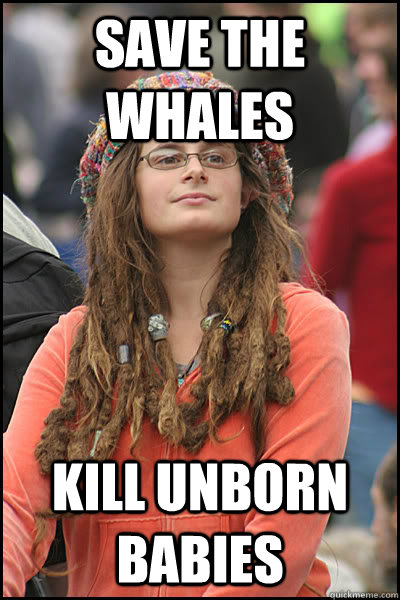 Of course, if our concern is for mental awareness, we could kill the chimpanzee or the baby or a teenager painlessly in his sleep, when he is not mentally aware. The real question is whether there is some reason to regard human life as inherently more valuable than nonhuman life. Our society has always acted on that premise. It is deeply rooted in the Judeo-Christian heritage of Western civilization. Abortion is both a cause and effect of this new “sliding scale” view of human worth.
Of course, if our concern is for mental awareness, we could kill the chimpanzee or the baby or a teenager painlessly in his sleep, when he is not mentally aware. The real question is whether there is some reason to regard human life as inherently more valuable than nonhuman life. Our society has always acted on that premise. It is deeply rooted in the Judeo-Christian heritage of Western civilization. Abortion is both a cause and effect of this new “sliding scale” view of human worth.
The problem is not whether animals should be treated humanely. Of course they should. The problem is whether humans should be treated humanely. Here our double standard becomes obvious. In many places goldfish are no longer given as prizes at fairs because they were being flushed down toilets, and that was considered cruel. Abigail Van Buren of “Dear Abby” has said that people should not be allowed to put to death their pets for any reason. Yet she has repeatedly affirmed that she is pro-choice about aborting babies.
When a Greenpeace activist came to a friend’s house and asked for a donation to save the whales and seals, she responded, “I think your cause is worthy, but I give to one I think is even more worthy—saving the lives of baby humans.” The activist scowled and walked away. His attitude is increasingly common in our society—Save the whales; kill the children.
Even if someone believes that people are no better than animals, why would they abhor the killing of young animals, while advocating the killing of young children?
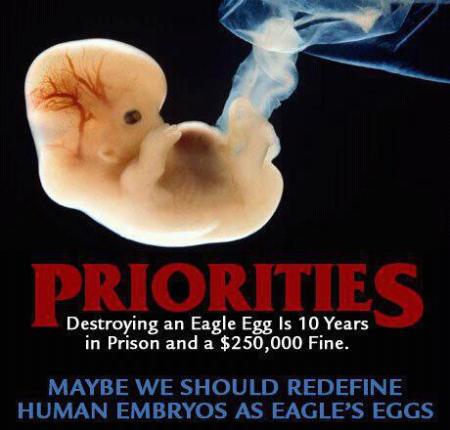 It is a serious crime, and strictly enforced, to break an eagle egg. Apparently, because there are plenty of unborn (parallel to unhatched) human babies, it is not a serious crime to kill them.
It is a serious crime, and strictly enforced, to break an eagle egg. Apparently, because there are plenty of unborn (parallel to unhatched) human babies, it is not a serious crime to kill them.
Everyone knows that to break an eagle egg before it hatches is to kill an eagle. What is it to perform an abortion on a person?
The notion that human beings are different in degree but not in kind from animals is no longer fringe notion. Many school children are now familiar with Singer’s awkward term speciesist Educated people—and generally speaking, only educated people—are seriously arguing that people have no more value than animals or that animals have just as much value as people.
As the founder and director of People for the Ethical Treatment of Animals (PETA) puts it: [21]
When it comes to feelings, a rat is a pig is a dog is a boy.
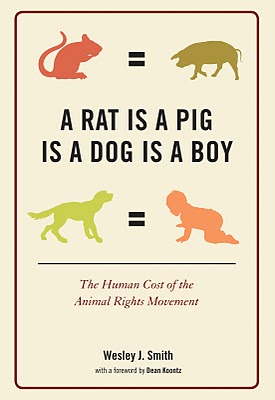 Of course, many of these people, even those who are vegetarians, live inconsistently with their beliefs. (They usually swat mosquitoes rather than lovingly feed and nurture them.) But the most remarkable thing is that not only these people, but the public at large, looks the other way when human babies are killed at all stages of development. This includes the use of painful and horrific procedures that would cause a massive social outcry if done on dogs, cats, horses, whales, dolphins, or even rodents.
Of course, many of these people, even those who are vegetarians, live inconsistently with their beliefs. (They usually swat mosquitoes rather than lovingly feed and nurture them.) But the most remarkable thing is that not only these people, but the public at large, looks the other way when human babies are killed at all stages of development. This includes the use of painful and horrific procedures that would cause a massive social outcry if done on dogs, cats, horses, whales, dolphins, or even rodents.
While it seems too little to ask that preborn human babies be shown the same respect as preborn animal babies, if this were actually done, it would save the lives of countless children in America each year.
It is dangerous when people in power are free to determine whether other, less powerful lives are meaningful.
Peter Singer says: [22]
When the death of a disabled infant will lead to the birth of another infant with better prospects of a happy life, the total amount of happiness will be greater if the disabled infant is killed. The loss of happy life for the first infant is outweighed by the gain of a happier life for the second. Therefore, if killing the hemophiliac infant has no adverse effect on others, it would, according to the total view, be right to kill him.
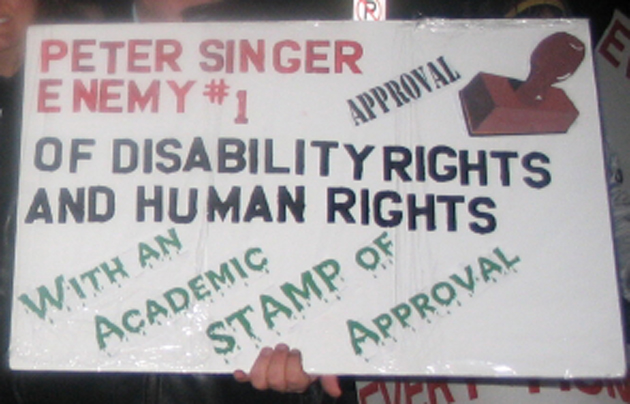 Statements such as this explain why Singer was protested when he first came to teach at Princeton’s Center for Human Values. The main protestors were Not Dead Yet, a disabilities rights group. They took offense at Singer’s books, which say it should be legal to deliberately kill disabled infants, as well as children and adults with severe cognitive disabilities, which might include people with Down syndrome, mental retardation, or even A.D.D.
Statements such as this explain why Singer was protested when he first came to teach at Princeton’s Center for Human Values. The main protestors were Not Dead Yet, a disabilities rights group. They took offense at Singer’s books, which say it should be legal to deliberately kill disabled infants, as well as children and adults with severe cognitive disabilities, which might include people with Down syndrome, mental retardation, or even A.D.D.
His ethics textbook also says:
The life of a fetus is of no greater value than the life of a nonhuman animal at a similar level of rationality, self-consciousness, awareness, capacity to feel, etc.
He also says: [23]
Since no fetus is a person, no fetus has the same claim to life as a person.
(Parents paying for their children to attend Singer’s classes at Princeton might also want to consider that he believes there’s justification for the elderly to be exterminated as well.)
George Will has this to say about the Princeton professor: [24]
Peter Singer comes to campus to teach that truly ethical behavior will not flourish until humanity abandons the fallacy, as he sees it, of “the sanctity of life.” He comes trailing clouds of controversy because he argues, without recourse to euphemism or other semantic sleights-of-hand, the moral justification of some homicides, including infanticide and euthanasia. He rejects “the particular moral order” which supposes that human beings are extraordinarily precious because God made them so. He also rejects secular philosophies that depict human beings as possessing a unique and exalted dignity that sharply distinguishes them from, and justifies their “tyranny” over, other species of animals. He appalls the right-to-life movement but actually he is the abortion-rights movement’s worst nightmare. The logic of moral reasoning often is that he who says A must say B. Singer and other pro-choice people say A. But he then says: A entails B, and B includes infanticide.
Unfortunately, Singer isn’t the only one who holds to his “only the smart and healthy and big deserve to live” worldview. A Portland, Oregon abortionist, Jim Newhall, said:[25]
Not everybody is meant to be born. I believe, for a baby, life begins when his mother wants him.
To have heard fifty years ago that a human life begins and ends according to the desires of other human beings would have been unfathomable to thinking people. But apparently the reporter didn’t even think to ask the abortionist a follow-up question.
Even organizations that do much good, such as the March of Dimes, have been heavily influenced by the eugenics movement. Dr. Marie Peeters-Ney, director for medical research of the Michael Fund points out: [26]
The birth of a child with a chromosomal anomaly is now widely considered as a medical error and in certain countries lawsuits are filed against doctors because they failed to diagnose the ‘condition’ in utero. In an insidious manner, mentalities are changing and people now regard persons with a handicap as someone who should not be there.
Who determines “meaningful”?
In the 1973 Roe v. Wade decision the Supreme Court questioned whether the unborn had “meaningful” lives. But meaningful to whom, and when? Is the fact that your life was not taken from you as an unborn meaningful to you now? If a mother wants her baby, his life is highly meaningful, which is why she mourns if there is a miscarriage.
If the mother doesn’t want her baby, then his life is not meaningful to her. But does the worth of a human being depend upon whether others think his life is meaningful?
Does the unborn transform from person to nonperson with each of his mother’s changes of mind? And doesn’t every human being regard the life he had in the womb as meaningful, since had it been terminated he would not now be alive?
The powerful don’t have the right to determine the true worth and personhood of the less powerful.
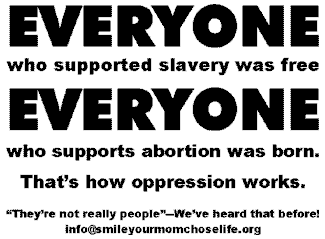 Black people, women, Indians, Jews, and many others have been declared nonpersons or persons whose lives are not meaningful. But for whose benefit? That of the people in power, who have declared for their own economic, political, or personal advantage who is meaningful and who isn’t.
Black people, women, Indians, Jews, and many others have been declared nonpersons or persons whose lives are not meaningful. But for whose benefit? That of the people in power, who have declared for their own economic, political, or personal advantage who is meaningful and who isn’t.
Whites decided that blacks were less human.
Males decided that women had fewer rights.
Now, big people have decided that little people don’t have rights.
There have been at least two other instances in American history in which specific groups of human beings were stripped of their rights of personhood as a means of justifying horrific mistreatment.
 African-Americans and Native-Americans both felt the brunt of a system which tried to create the artificial classification: human, non-person. This distinction wasn’t based on an honest evaluation of the evidence, but with an eye towards justifying a specific action.
African-Americans and Native-Americans both felt the brunt of a system which tried to create the artificial classification: human, non-person. This distinction wasn’t based on an honest evaluation of the evidence, but with an eye towards justifying a specific action.
In the case of Native-Americans, they had land. In the case of African-Americans, they had labor. Classifying them as non-persons (even property) provided a moral framework for those in power to forcefully take what they wanted without compensation.
Today, “unwanted,” unborn children don’t hold anything as tangible as land or labor, but their claims on those who would eliminate them are no less significant. They stand in the way of an unencumbered, more self-absorbed lifestyle.
Once again, this notion that human beings can be classified as “non-persons” is not built on an objective assessment of the facts, but with an eye towards justifying abortion.
Personhood has an inherent value—a value that comes from being a member of the human race.
Personhood is not something to be bestowed on living human beings, large or small, by an intellectual elite with vested interests in ridding society of undesirables. Personhood has an inherent value—a value that comes from being a member of the human race. For those who believe the Bible, this is linked to being created in the image of God. But even those who do not can hold to the position— though it is increasingly difficult to do so—that human life is valuable even when it is young or small or “less useful” to others.
This question is much broader than the issue of abortion. Exactly the same logic is being used with already born children. Dr. Charles Hartshorne of the University of Texas at Austin says: [27]
Of course, an infant is not fully human…. I have little sympathy with the idea that infanticide is just another form of murder. Persons who are already functionally persons in the full sense have more important rights even than infants.
Once it is acceptable to kill unborn children, no one who is weak or vulnerable can be safe. Is a handicapped person fully human? Is his life meaningful? How about the elderly? If those who cannot think do not deserve to live, what about those who think the wrong way?
Do we really want to live in this brave new world fostered by the skewed logic of the abortion rights movement?
It is unjust and inaccurate to classify certain human beings as “non-persons.”
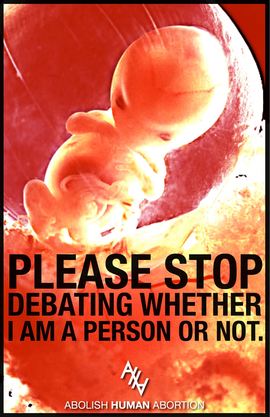 By definition, humanity and personhood go hand in hand. Developing humans in the womb have an intrinsically personal nature and even demonstrate “personality” in many of the same ways that newborn babies do.
By definition, humanity and personhood go hand in hand. Developing humans in the womb have an intrinsically personal nature and even demonstrate “personality” in many of the same ways that newborn babies do.
There are essentially two issues which must be resolved concerning unborn embryos and fetuses. The first is, “Are they human beings?” The second is, “Should they be recognized as persons under the law?” We’ve already established that there is no debate on the first question. It is a matter of plain, objective science.
Embryos and fetuses are fully and individually human from fertilization on. If this were not true, if unborn children were not genetically-distinct human beings, there would be no need to even talk about rights of personhood. “Removing a fetus” would be the moral equivalent of pulling a tooth. This, however, is not the case, and so the debate must enter the political arena.
Should humans be recognized as persons under the law? Yes, because humans are persons. Something is a person if it has a personal nature. [28] In other words, something is a person if, by nature, it has the capacity to develop the ability to think rationally, express emotion, make decisions, etc. This capacity is something that a person has as soon as he begins to exist, since it is part of his nature (in other words, if he exists, he has it). Since humans have a personal nature, humans are persons.
As for the fetus, since it is a human (something with a personal nature), it is a person. [29] Just as a cat qualifies as a feline simply by being a cat, a fetus qualifies as a person simply by being a human. [30] So, it is impossible for a fetus to not be a person.
This fact should be enough. The intrinsic humanity of unborn children qualifies them as persons and should, therefore, guarantee their protection under the law. Since 1973, however, this has not been the case in America. The situation we are left with is this. There is a huge and singular group of living human beings who have no protection under the law and are being killed en masse every day.
Why the “implantation view of personhood” is wrong.
Implantation is a gauge of personhood only if location, nutrition, and interfacing with others make us human.
It is increasingly common for people to affirm that human life begins not at conception, but at implantation. This is especially true of physicians who wish to think of themselves as pro-life while performing procedures or prescribing chemicals that can result in the destruction of those already conceived but not yet implanted.
To suggest that a newly conceived human being is not a living person just because she has not yet settled into her mother’s endometrium is illogical. The endometrium is simply the source of “housing” and nourishment that will allow the already conceived child to continue living. Would we say the homeless and the hungry are not really people since they aren’t living in a house or being fed? Just as we would do all we can to be sure adults who are homeless and hungry are not deprived of shelter and food, we should do all we can to be sure children are not deprived of the shelter and food provided by their mother’s endometrium.
Some people argue that life begins at implantation, because the unborn is “lacking the essential element that produces life: an interface with the human community and communication of the fact that it is there.” [31] But what does interfacing and communication have to do with whether or not someone is alive? If others are not aware of my existence (for instance, if I were stranded on a desert island or trapped in a cave), would that mean I would cease to exist? Another argument comes from twinning, the division of a conceptus, and recombination, the reuniting of two concepti. These can occur up to fourteen days after conception, before or after implantation. Therefore some believe individual human life does not begin until that time. Robert Wennberg addresses this argument: [32]
Imagine that we lived in a world in which a certain small percentage of teenagers replicated themselves by some mysterious natural means, splitting in two upon reaching their sixteenth birthday. We would not in the least be inclined to conclude that no human being could therefore be considered a person prior to becoming sixteen years of age; nor would we conclude that life could be taken with greater impunity prior to replication than afterward. The real oddity—to press the parallel— would be two teenagers becoming one. However, in all of this we still would not judge the individual’s claim to life to be undermined in any way. We might puzzle over questions of personal identity…but we would not allow these strange replications and fusions to influence our thinking about an individual’s right to life. Nor therefore does it seem that such considerations are relevant in determining the point at which an individual might assume a right to life in utero.
In the case of identical twins, the genetic code that each possesses is indistinguishable. If this meant that either were somehow less human because of that exceptional condition, it would also mean that they must be less human after birth. (And triplets less human still).
Why the “quickening view of personhood” is wrong.
Quickening is a gauge of personhood only if someone’s reality or value depends upon being noticed by another.
“Quickening” is an old term for when the mother first becomes aware of the movements of the child within her. Because the uterus is not highly sensitive to touch, quickening often happens in the second trimester, long after the child has started moving.
Some women feel their children very early, others don’t feel their presence until months later. Surely we cannot believe that one child becomes human when his mother senses him at twelve weeks development, and another doesn’t become human until his mother senses him at twenty.
One person’s ability or inability to recognize the presence of another has nothing whatsoever to do with the second person’s reality. Human life begins at conception, not at perception.
Why the “viability view of personhood” is wrong.
Viability is an arbitrary concept that changes constantly because it depends on technology not the unborn baby.
Viability is an arbitrary concept. Why not associate personhood with heartbeat, brain waves, or something else?
In Roe v. Wade, the Supreme Court defined viability as the point when the unborn is: [33]
Potentially able to live outside the mother’s womb, albeit with artificial aid.
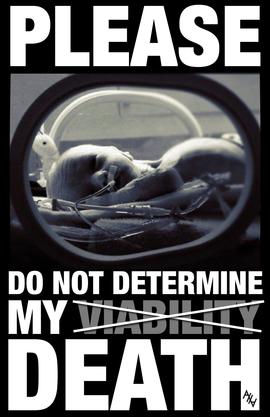 The critical issue in when this point is reached is the development of the child’s lungs. But why make worthiness to live dependent upon the development of the child’s lungs? Why not say he becomes human in the fourth week because that’s when his heart beats? Or the sixth week because that’s when he has brain waves? (Both are also arbitrary, yet both would eliminate all abortions currently performed.) Someone could argue that personhood begins when the unborn first sucks his thumb or responds to light and noise. Or why not say that personhood begins when the child takes his first step or is potty trained?
The critical issue in when this point is reached is the development of the child’s lungs. But why make worthiness to live dependent upon the development of the child’s lungs? Why not say he becomes human in the fourth week because that’s when his heart beats? Or the sixth week because that’s when he has brain waves? (Both are also arbitrary, yet both would eliminate all abortions currently performed.) Someone could argue that personhood begins when the unborn first sucks his thumb or responds to light and noise. Or why not say that personhood begins when the child takes his first step or is potty trained?
There is only one objective point of origin for any human being—only one point at which there was not a human being a moment ago, and there is now. That point is conception.
The point of viability constantly changes because it depends on technology not the unborn herself. Eventually babies may be viable from the point of conception. like all points other than conception, viability is arbitrary, but it is even more arbitrary than most. The point at which heart and brain develop—though unscientific as measurements of personhood—at least remain fairly constant. Yet in the last three decades, viability has been reduced from thirty weeks to less than twenty weeks of development. A child has actually been born at nineteen weeks and survived.
Viability depends not only on the child but on the ability of our technology to save his life. What will happen when we are able to save lives at fifteen weeks or less? Will those children suddenly become human and worthy to live? Can we honestly believe that children at twenty-one weeks were not human twenty years ago, but are human now simply because of improved technology? Or can we believe that the unborn at eighteen weeks, who is just barely nonviable, is not a human being, but ten years from now he will be because hospitals will have better equipment?
Does the baby’s nature and worth also depend on which hospital—or country—he is in since some hospitals are equipped to save a nineteen-week-old child and others could save a child no earlier than twenty-eight weeks? Technologies change; babies do not. Surely we cannot believe that the sophistication of life-support systems determines the reality or worth of human life!
Dr. Landrum Shettles, a pioneer in fertility and sperm biology and contributor to fifty medical textbooks, made this assessment of the Supreme Court’s arguments based on viability: [34]
An abortion law truly based on “viability” would require constant redefinition. What was not considered protectable human life last year might be this year. If we were to take the Court at its word, we would find ourselves with a law that makes last year’s “abortions” this year’s homicides in some cases. I have maintained human embryos in “laboratory wombs” for several days…. It appears inevitable that the day will come when the unborn will always be potentially viable outside the womb.
Test-tube babies have already survived for days outside the womb before implantation. Shouldn’t proponents of the viability theory then maintain that they were human from the point of conception since they were viable all along? As Dr. Shettles suggests, viability is ultimately an argument for the humanity of all preborn children since eventually science may find a way for an entire “pregnancy” to take place outside of a mother.
Despite all this, the Supreme Court cited viability as the point where the state has a compelling interest in the welfare of the unborn. (Ironically, the wording of the decision allowed abortion after viability anyway.) However, in the 1989 Webster v. Reproductive Health Services decision, the Supreme Court began to dismantle the illogical conclusions of Roe v. Wade when it said:
We do not see why the State’s interest in protecting potential human life should come into existence only at the point of viability.
The tiniest baby to survive in Oregon weighed just ten ounces at birth. Born on March 5, 2000, she was able to be held in her mother’s palm. Following her birth by Caesarian section, Sophia didn’t have cranial bleeding, which often causes blindness, mental retardation, and other problems in premature infants. She was breathing by herself, and at five weeks, at one and a half pounds, she had more than doubled her weight. [35] Front page follow-up reports joyfully tracked the growth of little Sophia, showing her going home with her parents ninety-one days after birth. [36] By then she was four pounds.
Remarkably, the updates on little Sophia appeared in the Oregonim, a newspaper that has frequently printed editorials defending abortion. Every day that Sophia’s life was being celebrated, many Oregon infants bigger than ten ounces, and some bigger than four pounds, were being cut to pieces in Portland abortion clinics. In all the media coverage, no one voiced the incongruity of why one child’s life should be cherished and celebrated, while other children’s lives, children of exactly the same kind and stage of development, were violently extinguished.
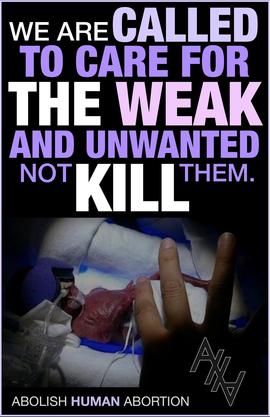 In a broad sense, many born people are not viable because they are incapable of surviving without depending on others. If viability is viewed in its broadest sense as the capacity to live without depending on other human beings, many people in our society are not viable. The premature baby still has to depend on someone for human care, even if it’s a team of doctors and nurses who hover over him day and night.
In a broad sense, many born people are not viable because they are incapable of surviving without depending on others. If viability is viewed in its broadest sense as the capacity to live without depending on other human beings, many people in our society are not viable. The premature baby still has to depend on someone for human care, even if it’s a team of doctors and nurses who hover over him day and night.
What do the sick, the handicapped, Alzheimer’s victims, infants, two-year-olds, many elderly, and the unborn all have in common? First, they are people. Second, they are not viable; they are dependent upon other people to live.
Many accident victims can’t survive on their own without medical help. Is the person whose lungs are punctured now a nonperson? I am an insulin-dependent diabetic. I can’t survive on my own. Without insulin I will die. Does that mean I’m not a person? The ability to survive without someone’s help is a poor criterion by which to evaluate his humanity.
An infant won’t survive two days without adult care. A two-year-old can’t survive on his own either. Though these children can be very inconvenient and interfere with the desires and lifestyles of adults, most of us do not believe their parents have the right to kill them. I say “most of us” not facetiously, but in the interests of accuracy.
Psychiatrist and anthropologist Virginia Abernethy of Vanderbilt University’s School of Medicine said in Newsweek: [37]
I don’t think abortion is ever wrong. As long as an individual is completely dependent upon the mother, it’s not a person.
The article goes on to explain:
In this view, which is shared by other pro-choice theorists, an individual becomes a person only when he or she becomes a responsible moral agent—around three or four, in Abernethy’s judgment. Until then, she thinks, infants—like fetuses—are nonpersons; defective children, such as those with Down syndrome, may never become persons.
Those who doubt the logical and inevitable consequences of the prochoice position should consider carefully these words. Even Newsweek, which has never been known as a mouthpiece for the pro-life movement, cannot help but point out what a short jump there is from abortion to infanticide.
Why the “functional view of personhood” is wrong.
At this point, some people define the term “person” according to function (call this view the functional view of persons). That is, they say that something qualifies as a person if it can do certain things, like think rationally. But this definition of personhood fails. First, there are clear cases in which something qualifies as a person, but cannot do the things required of the functional view of persons. [38]
For example, a human person under a general anesthesia does not qualify as a person under the functional view of persons, since a person in this situation does not have the ability to think rationally.
Two, the functional view of persons does not fit certain intuitions about persons. For example, if you had a cat that couldn’t purr, couldn’t chase mice, and couldn’t climb trees, you wouldn’t say that your cat isn’t a feline (though you should if you define “feline” in terms of function). Instead, you would say that your cat is a cat that can’t purr, chase mice, or climb trees. [39] In the same way, if you know a human that can’t think rationally (like a fetus, or a person under a general anesthesia), you shouldn’t say that this human isn’t a person, but that this is a person who (at the moment) can’t think rationally. In light of these reasons, the functional view of persons should be rejected.
Even though we do not qualify or disqualify something as a person on the basis of what it can or can’t do, it’s still worth noting that fetuses display aspects of their personal nature while still in the womb. That is, fetuses can do things that you would only expect of more fully developed persons. For example, National Geographic, in their video, In the Womb: Multiples, goes so far as to say:
As identical twins grow bigger, they’re almost always in contact, touching hands, faces, feet and gradually becoming more aware of themselves and each other.
Did you catch that? They’re becoming more and more aware of themselves and each other. Developing human beings begin responding to and interacting with their environment long before they are born.
Dr Bernard Nathanson once stated: [40]
I have put Mozart in a tape player and held it against a womb at, say, seven months, and the baby moved a little, but when I put Van Halen on, the baby was jumping all over the place.
The following testimonies highlight the remarkable social interactions taking place inside the womb:
Small, inconvenient, unwanted – so even though they are human beings, the unborn baby in the womb is “not a person”?!
In America today, there is only one group of human beings for which being human is not enough: “unwanted,” unborn children. The inconvenience of their existence has resulted in a legal loophole of shameful proportions. They’re small. We can’t see them. They’re in the way, so we define personhood in a way that conveniently excludes them.
Ask yourself this, is it ever legitimate to categorize specific members of the human community as “non-persons”?
If it’s morally reprehensible to kill a developing human being after birth, why is it morally permissible to kill a developing human being before birth?
Personhood is properly defined by membership in the human species, not by stage of development within that species. A living being’s designation to a species is determined not by the stage of development but by the sum total of its biological characteristics.
References:
- Roland M. Nardone, “The Nexus of Biology and the Abortion Issue,” Jurist, Spring 1973,154.
- A good treatment of this critical issue of what constitutes personhood is Ron Norquist’s “PERSONally Opposed,” http:/www.epm.org/opposed.html.
- Sagan and Druyan, “Is It Possible to Be Prolife and Prochoice?” 5.
- Dr. Seuss, Horton Hears a Who (New York: Random House, 1954).
- Joseph Fletcher, Situation Ethics: The New Morality, cited by Mark O’Keefe, “Personhood: When Does It Begin…or End?” Oregonian, 12 February 1995, Bl.
- Ashley Montague, Sex, Man and Society (New York: G. P. Putnam and Sons, 1967), cited by Paul Fowler, Abortion: Toward an Evangelical Consensus (Portland, Ore.: Multnomah Press, 1987), 34-5.
- Roe v. Wade, 410 U.S., 1973.
- Associated Press, cited in Christian Action Council’s Action Line, March-April 1991.
- Begley, “Do You Hear What I Hear?” 12.
- Ibid.
- T. Verney and J. Kelley, The Secret Life of the Unborn Child (New York: Delta Books, 1981).
- H. B. Valman and J. F. Pearson, “What the Fetus Feels.” (This is a printed article with no reference to the publication in which it appeared. Dr. Valman is consultant pediatrician at Northwick Park Hospital and Clinical Research Center in Harrow; Pearson is senior lecturer and consultant obstetrician and gynecologist at Welsh National School of Medicine in Cardiff.)
- John Willke, Abortion Questions and Answers (Cincinnati, Ohio: Hayes Publishing Co., 1988), 53.
- Begley, “Do You Hear What I Hear?” 14.
- Peter Singer, Animal Liberation (New York: Avon Books, 1975), 215.
- Peter Singer, Animal Liberation, rev. ed. (New York: Avon Books, 1990), 6.
- Peter Singer, Practical Ethics (1979), cited in “Peter Singer in His Own Words,” Accuracy in Academia, www.academia.org/singerquotes.html.
- Singer, Practical Ethics (1979), 97, cited by Charles E. Rice, Fifty Questions (New Hope, Ky.: Cashel Institute, 1986), 64-5.
- Peter Singer, “Sanctity of Life or Quality of life,” Pediatrics, July 1983,129.
- Winston L. Duke, “The New Biology,” Reason, August 1972.
- Ingrid Newkirk, cited in Richard Mike, “Animal Liberation: Do the Beasts Really Benefit?” www.probe.org/docs/anim-rts.html.
- Singer, “In His Own Words.”
- Ibid.
- George Will, “Life and Death at Princeton,” Newsweek, 7 September 1999, www.npnd.org/will.htm.
- Jim Newhall, cited by Maureen O’Hagan, “Cross Hairs to Bear,” Willamette Week, 3 May 1995.
- “Prelude to the New Holocaust, Part ?, (The MOD Brings the Eugenic Spirit Home),” The Michael Fund (a prolife alternative to the March of Dimes), 500 A Garden City Drive, Pittsburgh, PA 15146, (724) 823-6380, www.michaelfimd.org
- Charles Hartshorne, “Concerning Abortion: An Attempt at a Rational View,” Christian Century, 21 January, 1981, 42-5
- Greg Koukl, “Are Humans Persons?” Accessed June 3, 2009; Available from http://www.str.org/site/News2?page=NewsArticle&id=5117.
- Robert George and Christopher Tollefsen, Embryo: A Defense of Human Life (New York: Doubleday Broadway Publishing Group, 2008), 58.
- Francis Beckwith, “The Explanatory Power of the Substance View of Persons,” Christian Bioethics 10 (2004): 33-54.
- Nathanson, Aborting America, 216.
- Robert Wennberg, Life in the Balance: Exploring the Abortion Controversy (Grand Rapids, Mich.: Wm. B. Eerdmans Publishing Co., 1985), 71, cited in Francis J. Beckwith, Politically Correct Death: Answering the Arguments for Abortion Rights (Grand Rapids, Mich.: Baker Book House, 1993), 97.
- Roe. Wade, 410 U.S. 113 (1973), 38.
- Molly Yard, quoted in “Voices of the Abortion Debate,” New Dimensions, October 1990,109.
- Kate Taylor, “Hanging in There at 1.5 Pounds,” Oregonian, 7 April 2000
- Micahel Ottey, “Oregon’s Tiniest Goes Home, Sweet Home,” Oregonian, 3 June 2000, Bl.
- Kenneth L. Woodward, “The Hardest Question,” Newsweek, 14 January
- Francis Beckwith, “The Explanatory Power of the Substance View of Persons,” Christian Bioethics 10 (2004): 33-54.
- Ibid.
- Bernard N. Nathanson, M.D. The Hand of God (Washington, DC: Regnery Publishing, 1996), 130.
